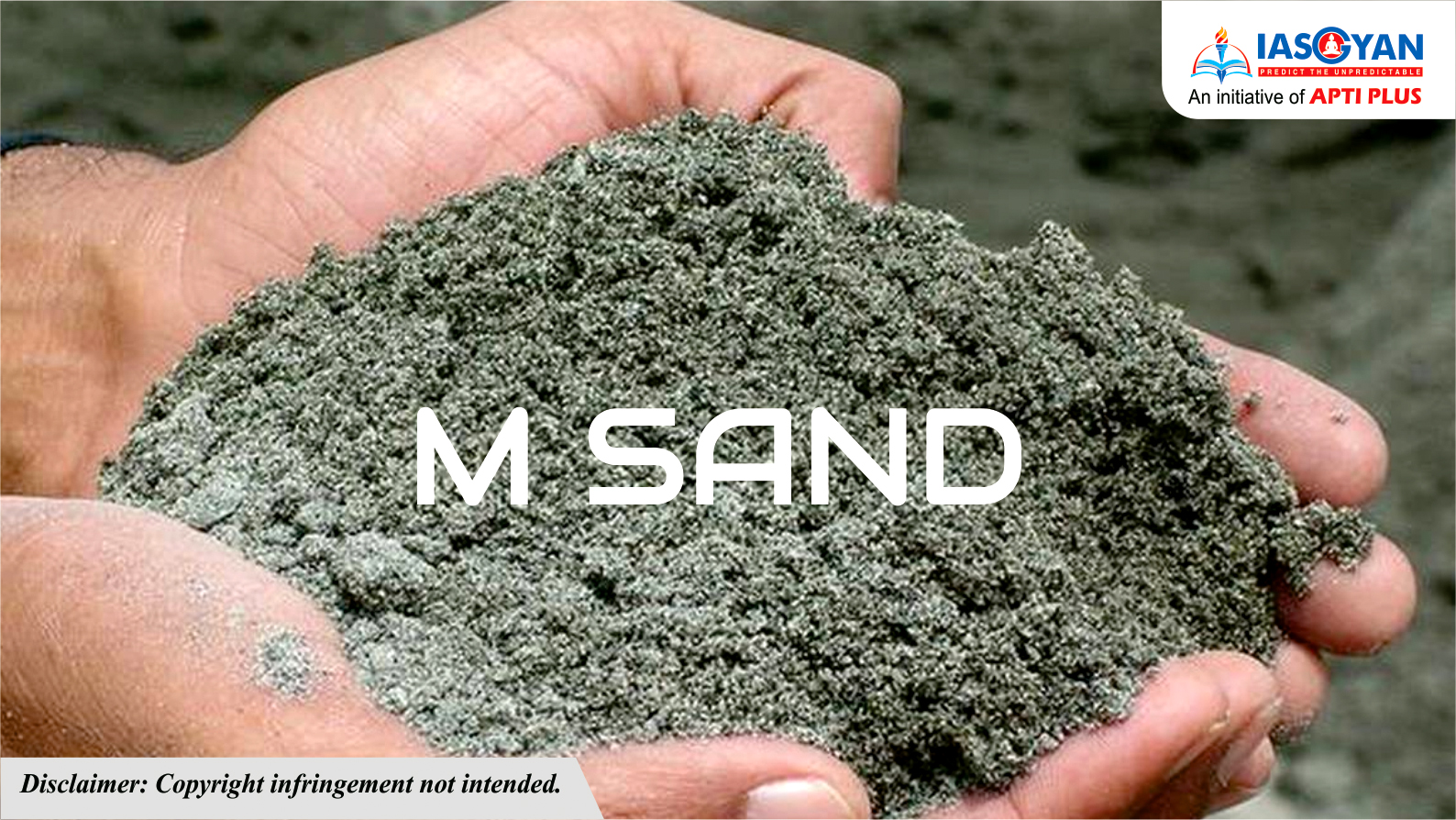




Quarry and Rocks stones are crushed at jaw crushers, cone crushers, and vertical shaft impact crushers, respectively leading into the formation of angular and cubical fine aggregate particles.
Screening ensures this material is properly graded that’s similar to river sand.
Washing removes all the micro-fine particles. Also, fine aggregates for concrete and plaster sand are also formed.
|
Sr.No. |
M-Sand |
River Sand |
|
1 |
M-Sand manufactured in a factory |
This naturally available on river banks |
|
2 |
The source of Crushed sand is a quarry. It is manufactured by quarry stones, Crushing rocks, or larger aggregate pieces into sand size particles in a factory or quarry. |
This is naturally available and extracted from the riverbanks or river beds. |
|
3 |
The shape of Crushed sand is angular and cubical and has a rough texture and hence, better for concrete. |
The shape of natural sand is rounded and has a smooth surface. |
|
4 |
No moisture content. |
Moisture is generally present between the particles. Hence, it affects the assumptions of concrete mix design and quality of concrete. |
|
5 |
This sand highly recommended for Reinforced concrete purposes and brick/block works. |
River sand is recommended for Reinforced concrete, plastering and brick/blockwork. |
|
6 |
Particle passing 75 microns: Up to 15% |
Particle passing 75 microns: Up to 3% |
|
7 |
M-sand specific gravity is approximate 2.73 (Depends on parent rock.) |
River sand specific gravity is approximate 2.65 (Depends on rocks in the catchment area.) |
|
8 |
M-sand dry density of 1.75 kg/m3 |
Naturally Sand dry density of 1.44 kg/m3 |
|
9 |
M-sand is manufactured to conform to zone II. |
This sand mostly conforms to zone II and zone III |
|
10 |
There is less adulteration. |
There is a high probability of adulteration because of acute shortage. Natural sand adulteration with saline sea sand is common in coastal areas. |
|
11 |
M-sand less damage to the environment as compared to natural sand. |
This river sand is harmful to the environment. It reduces the groundwater level and rivers water gets dried up. |
M-Sand and River Sand
|
IS Sieve |
M-Sand % Age Passing |
River Sand % Age Passing |
% Age passing for single Normal Sand 115 383 – 19701 Zone II |
|
4.75 mm |
99.75 |
99.25 |
100 to 90 |
|
2.36 mm |
78.25 |
93.50 |
100 to 75 |
|
1.18 mm |
52.00 |
48.00 |
90 to 55 |
|
600 microns |
38.00 |
21.00 |
59 to 35 |
|
300 microns |
21.00 |
4.00 |
30 to 08 |
|
150 microns |
5.00 |
0.05 |
10 to 0 |
|
Impact of Depletion of River Sand
|
Manufactured sand is being used in India, but is still not popular due to the following reasons:

Generating Awareness
Government Initiative
Initiative by Construction Industry
Initiative by Research institutions
Media
© 2025 iasgyan. All right reserved